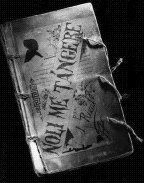
l Filibusterismo was written in dedication to the three martyred priests Mariano Gomez, Jose Burgos, and Jacinto Zamora, whose deaths left an indelible mark in his mind.
Like Noli Me Tangere, Fili aims at enlightening the society, at bringing the Filipinos closer to the truth. But whereas in the first novel, we are encouraged to ask and aspire for change and liberation, in this novel, the society is urged to open its eyes to reality and rebel against the Spanish government for its oppression and abuse.
In Noli, there is aspiration, beauty, romance, and mercy. In Fili, all the reader will feel is bitterness, hatred, and antipathy. The romance and aspirations are gone. Even the characters' personalities seem to have undergone radical change. This is how different Rizal's second novel is. Considering that both were written by the same author, the plots are poles apart.
Outright scorn and bitterness may already be felt at the beginning of the story, where Simoun promotes abuse and tyranny in the Spanish government, in the hope that the people will reach the limits of their endurance and declare a revolution.
Simoun, who is actually Noli's Ibarra in disguise, conveys an entirely different personality in Fili. While Ibarra is trusting, aspiring, and loving, Simoun is now cunningly careful in his dealings, distrusting, and extremely bitter. Something changed in Rizal; and this is reflected in the personalities he gave his El Filibusterismo characters.
synopsis
main points
characters
[back to top]
[noli me tangere]
[his masterpieces]












